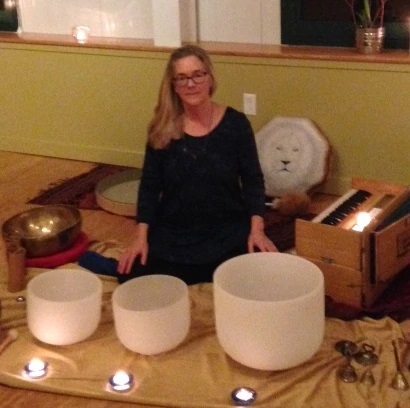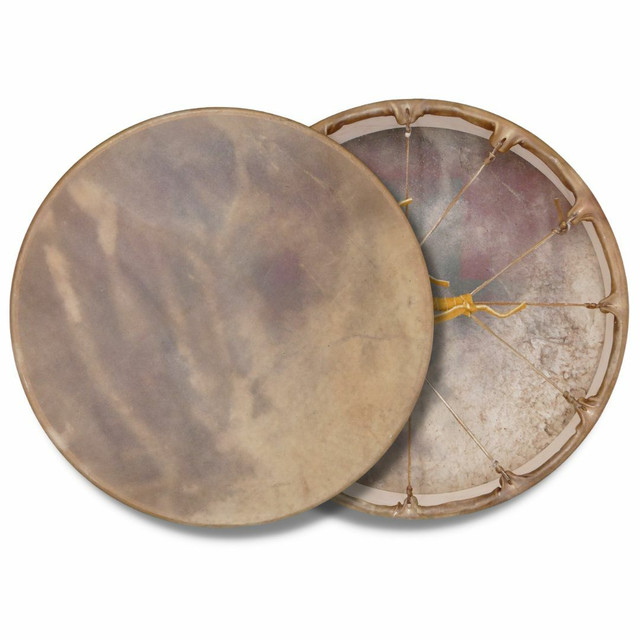Should I Buy A 432hz Tuned Crystal Singing Bowl?
What is 432hz, from a musical perspective?

We have to understand 432hz tuning, first, from a musical perspective because it is the most factual understanding of 432hz tuning. The whole conversation started from orchestras discussing which frequency they should tune their instruments to.
To understand 432hz tuning, we must first understand it in relationship to 440hz tuning. 440hz tuning is the standard pitch for musical instruments. In order to make it possible for musical instruments all over the world to play together in tune, a specific standard for tuning those instruments needed to be set. Over the course of the last 100 years, 440hz has become the standard for tuning instruments.
If you can imagine a piano, with all its white and black keys laid out, there is a key right in the middle called 4th octave A. What 440hz tuning means specifically, is that this 4th octave A resonates at 440hz, and all the other notes in the piano are tuned in relationship to A=440hz. According to this standard pitch, all musical instruments around the world are tuned assuming that the 4th octave A resonates at 440hz or cycles per second. There are some orchestras that tune their instruments to 441hz or 442hz or 444hz, however, for the most part if you are going to play a musical instrument, it is going to be tuned to 440hz.
432hz tuning simply means that this 4th octave A note is flattened by 8hz, so it equals 432hz instead of 440hz. Then, all the other notes are tuned in relationship to 4th octave A=432hz. In this way, all the notes in 432hz tuning are just slightly lower in tone. At the bottom of the page there are sound files for a 4th octave A playing at 429hz to 448hz, so you can see the subtle different in sound between these different tuning options.
It is important to understand that composers, at one time, tuned to their own inner ear of what "perfect pitch" was to them. Orchestras would have to retune instruments, and play sharper or flatter, in order to match what different composers experienced perfect pitch as. 440hz tuning was an attempt to simplify tuning, though modern orchestras will still tune to different tunings than 440hz.
Should I buy a 432hz singing bowl for my meditation?

There is a lot of information on the internet that explores 432hz from many different angles. There are beautiful cymatic images of 432hz tuning, and ongoing cymatic research. There are mathematical explorations of the number 432. There are musical arguments that 432hz tuning should become the base for tuning all instruments. We appreciate all of the effort put into these discussions though don’t believe they need to be all addressed in detail for the purpose of buying a crystal bowl. In terms of meditating with a crystal bowl, it is not necessary to have any specific frequency to go into deep spacious tranquility and gain insight. Crystal singing bowls are a great tool for meditation; though, the great meditators of the past, typically did not expand into great states of consciousness because of crystal singing bowls, or specifically tuned instruments. Reliably going into deep meditation is dependent upon the quality of your attention, intention, and understanding, more than the frequency of your musical instruments.
Crystal singing bowls create a lot of vibration, that pulse at different hz frequencies, and from this vibration, our thinking mind softens, and we are allowed more simply to relax and expand into deeper conscious states. Through relaxing and expanding awareness, we may experience profound visions, or experience energetic shifts in our body that can be life altering, or we may meet aspects of our consciousness that are waiting to be resolved or healed. Many people are drawn to sound because it is a potent tool to relax the thinking mind, to see more clearly and experience altered states of consciousness.
If we are to experience these changes, we must first with understanding, attend to the sound, and set certain intentions. Our own mental faculties must be set correctly in order for deeper states of consciousness to occur. If we were to decide that the bowls were uncomfortable, and meditation was uncomfortable, and we were unwilling to listen deeply to the bowls, it does not matter what frequency the bowl is tuned to, we will just experience discomfort. The bowl (which plays multiple frequencies) will pulse vibration at us, and we will experience ourselves cringe away and tighten. If we really just wanted to think about our own problems, we would not really listen to any bowl. We’d just put effort into thinking hard about our issues. Crystal singing bowl meditations, and all meditations, are primarily dependent upon the state of our own minds. When we enter into the meditation, we must set our attention, our intention, with specific understanding or wisdom, and allow the vibration to be used as a tool. In this way crystal singing bowls are a wonderful aid to meditation, but are not necessarily a magic pill that will cure an illness. We must put in the work as meditators with our own mental faculties at work to gain the deep understanding that will truly transform our lives in a significant way. We can help you develop meditative practices to use with crystal bowls, and offer both individual development sessions, and multi-day online classes.
 There are stories of people who have revelation come to them unexpectantly. They are walking down the street, and the veil of illusion becomes lifted to brilliant light and joy. Or, they hear a gong, and right then they experience a large energetic shift. One could argue that in these cases, there could be some outside force that affects us, where we open up into deeper states of consciousness without our own effort. Perhaps then there could be a specific frequency of sound that could do this, for all people, regardless of their differences. We expect though, that there are always internal mental aspects of consciousness that are attributing to these experiences. Further, it is important to understand in cases like these, one may experience an unexpected taste of deeper wisdom, but it is only an impermanent taste. When experiences like this happen, it does not mean then that a person can reliably enter into deeper states of joy or tranquility. Reliably experiencing blissful meditation, or deep states of calm, takes experience that can only come from putting in time to sit and attend to what is happening with their attention, intention and understanding. We all want meditation to be easy, and it is true that sound can make it easier, though in meditation we must face our resistances to joy and tranquility, and facing these resistances can be difficult, and takes skillful means. As with developing any new skill, we must take the time and space to practice. In our companies over 100 years of collective history, we have discovered inner states of awareness are far more effective then external tools for self-realization.
There are stories of people who have revelation come to them unexpectantly. They are walking down the street, and the veil of illusion becomes lifted to brilliant light and joy. Or, they hear a gong, and right then they experience a large energetic shift. One could argue that in these cases, there could be some outside force that affects us, where we open up into deeper states of consciousness without our own effort. Perhaps then there could be a specific frequency of sound that could do this, for all people, regardless of their differences. We expect though, that there are always internal mental aspects of consciousness that are attributing to these experiences. Further, it is important to understand in cases like these, one may experience an unexpected taste of deeper wisdom, but it is only an impermanent taste. When experiences like this happen, it does not mean then that a person can reliably enter into deeper states of joy or tranquility. Reliably experiencing blissful meditation, or deep states of calm, takes experience that can only come from putting in time to sit and attend to what is happening with their attention, intention and understanding. We all want meditation to be easy, and it is true that sound can make it easier, though in meditation we must face our resistances to joy and tranquility, and facing these resistances can be difficult, and takes skillful means. As with developing any new skill, we must take the time and space to practice. In our companies over 100 years of collective history, we have discovered inner states of awareness are far more effective then external tools for self-realization.
When customers ask if they should choose 440hz or 432hz, we suggest to them to listen to either tuning and feel into which sound they like the sound of, and how their body responds. Honestly most people we talk to prefer 432hz tuning over 440hz tuning, though this is not always the case. We believe that, a good suggestion is to purchase crystal bowls that you like the sound of. If you really like the sound, there is a good chance you will want to use the bowl, accept the bowl, and benefit from using the bowl as a tool for your meditative practice. Again, great composers of the past did not have anything like hz frequencies as a reference to their tuning. They tuned to their inner ear, and what they perceived as perfect pitch tuning. We suggest feeling into the tunings, and deciding for yourself which is right for you.
Below we have sound files for various tunings of crystal bowls. We suggest listening to each tuning. Which do you prefer?
4th Octave A - 45 cents (429hz)
4th Octave A - 30 cents (432hz)
4th Octave A - 15 cents (436hz)
4th Octave A +0 cents (440hz)
4th Octave A + 15 cents (444hz)
4th Octave A +30 cents (448hz)

























